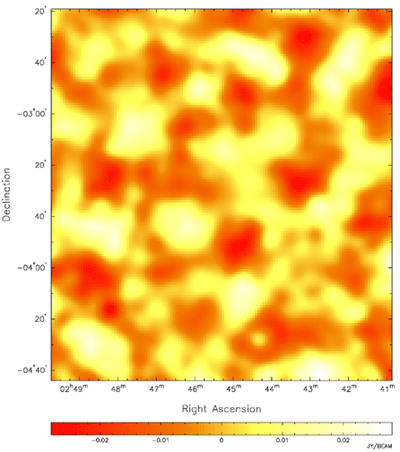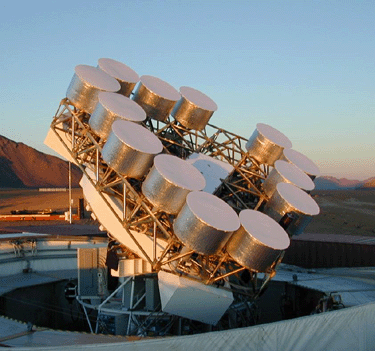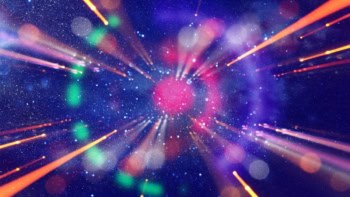Astrophysicists have produced the sharpest ever images of the cosmic microwave background. The images have allowed cosmologists to see for the first time the tiny density fluctuations that grew into the clusters of galaxies that can be seen in the universe today. The observations were made with the Cosmic Background Imager and five papers containing the results have been submitted to the Astrophysical Journal.

The cosmic microwave background provides a picture of the universe as it was some 300 000 years after the big bang, when the universe had cooled down enough for atoms to form, which meant that there were no longer any free electrons to scatter the photons produced in the early universe. Variations in the temperature of the microwave background therefore reflect variations in the density of the universe at this time.
The Cosmic Background Imager is a special-purpose radio telescope that is located at an altitude of 5000 metres in the Chilean Andes. The telescope consists of 13 interferometer elements on a 6-metre platform and operates at 10 frequency bands between 26 and 35 gigahertz. The CBI collaboration involves astrophysicists from the California Institute of Technology, the Canadian Institute for Theoretical Astrophysics, the University of Chicago and the Universidad de Chile.
The standard way to present measurements of the microwave background is to plot the power spectrum against multipole number, which is inversely proportional to angle. The standard big bang plus inflation model of cosmology predicts that this plot should contain a series of peaks, and the heights and positions of these peaks are related to basic astrophysical properties of the universe.
The CBI experiments can measure the power spectrum up to a multipole number of 3500, whereas previous experiments – such as Boomerang, Maxima and DASI – could only measure up to about 1000. These experiments have seen the first two peaks, with hints of a third. The CBI experiment can clearly see four peaks, with hints of two further peaks.
The CBI results are in agreement with previous measurements and confirm the basic model of a flat universe containing both dark matter and dark energy. “These unique high-resolution observations give a powerful confirmation of the standard cosmological model,” says Anthony Readhead of CalTech, who is the principal investigator on the CBI project. “Moreover, this is the first direct detection of the seeds of clusters of galaxies in the early universe.”




